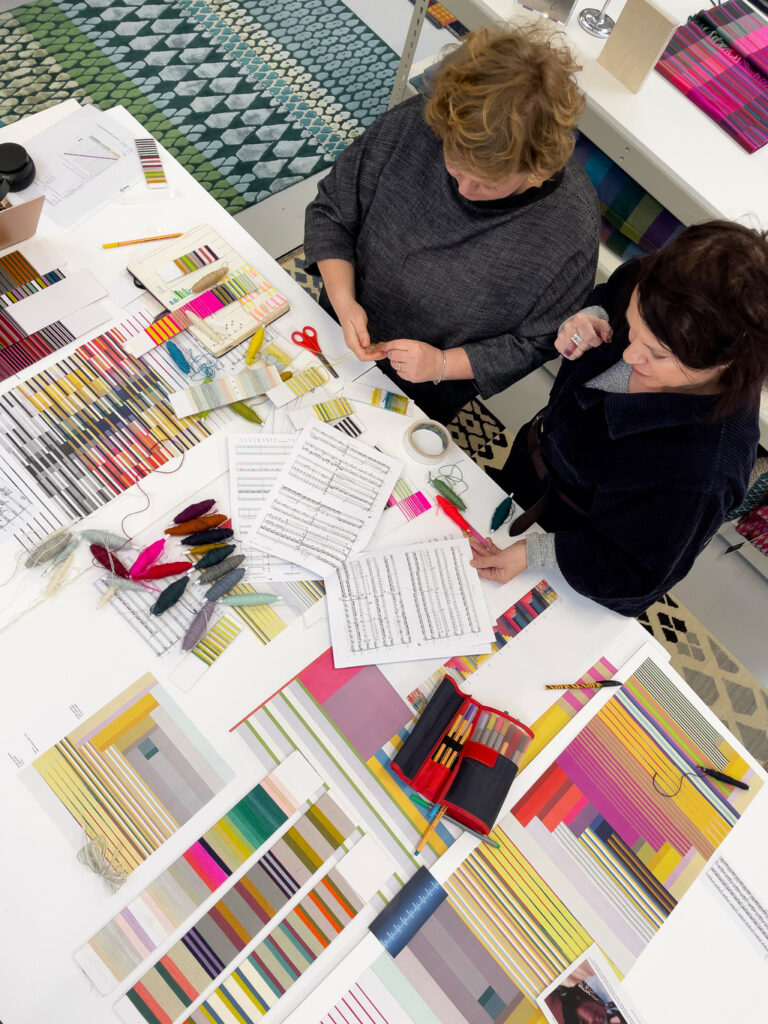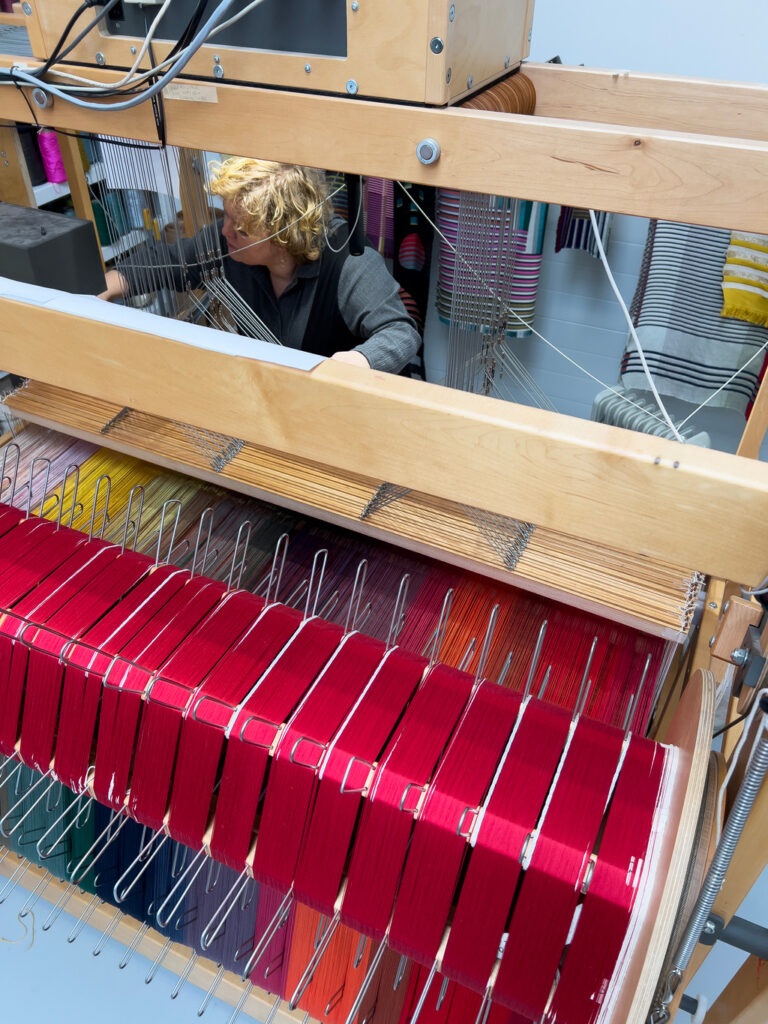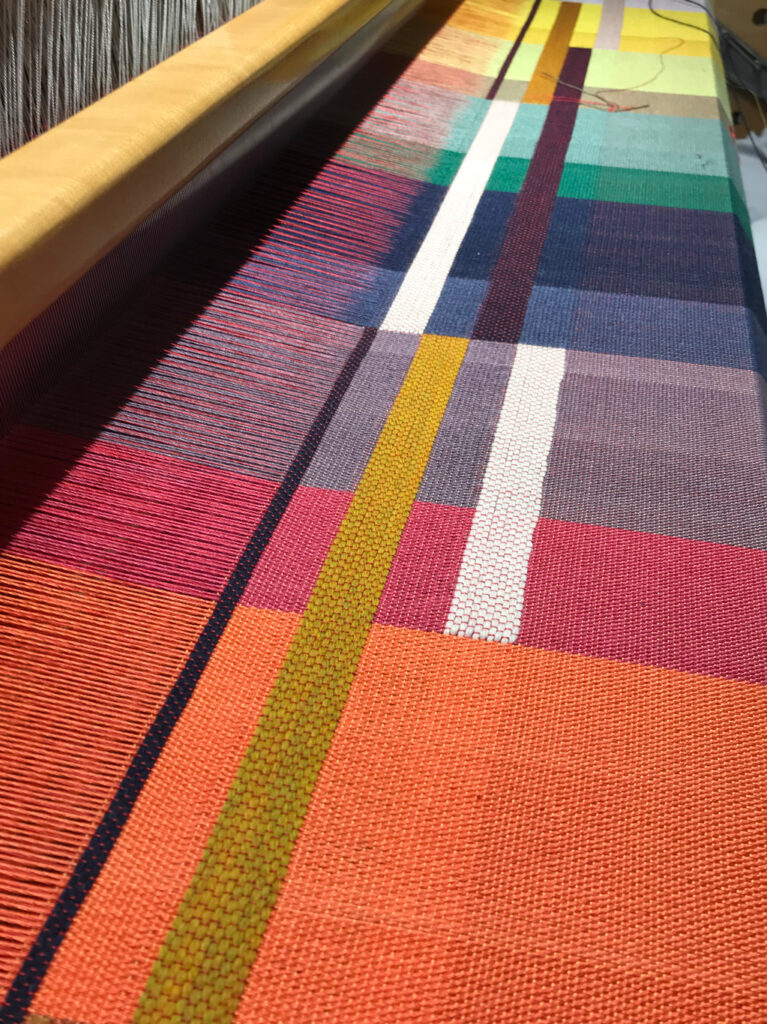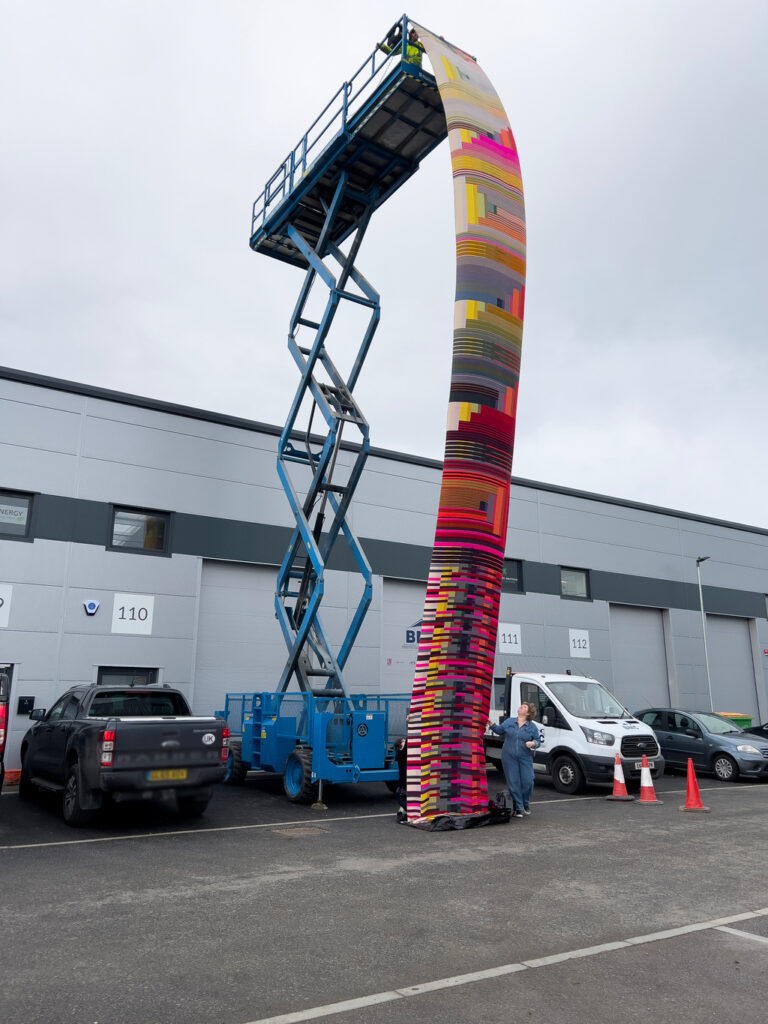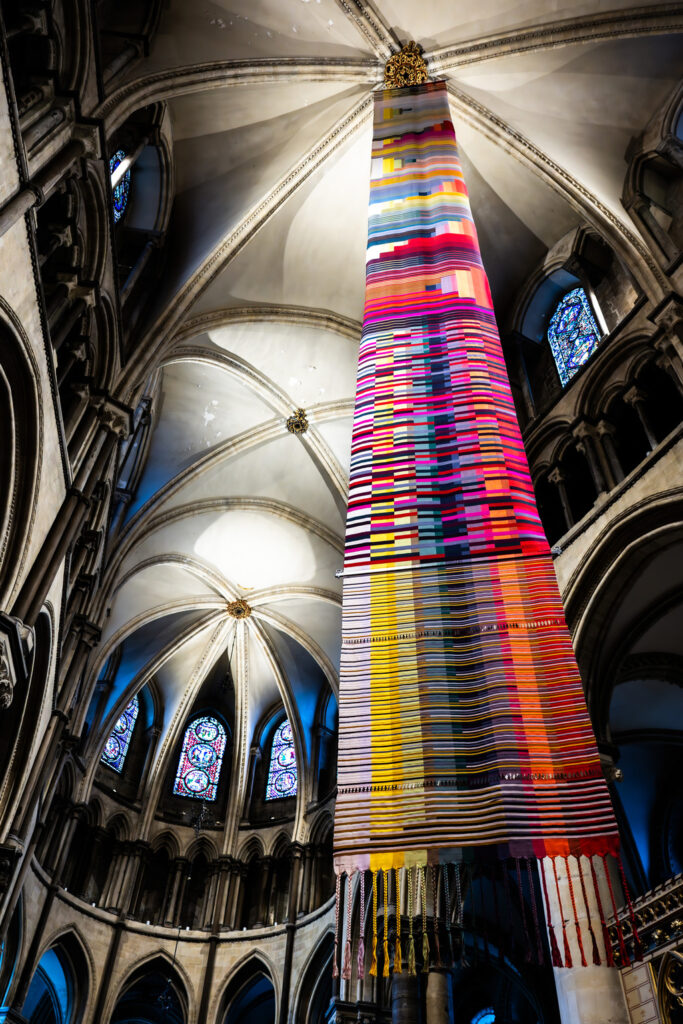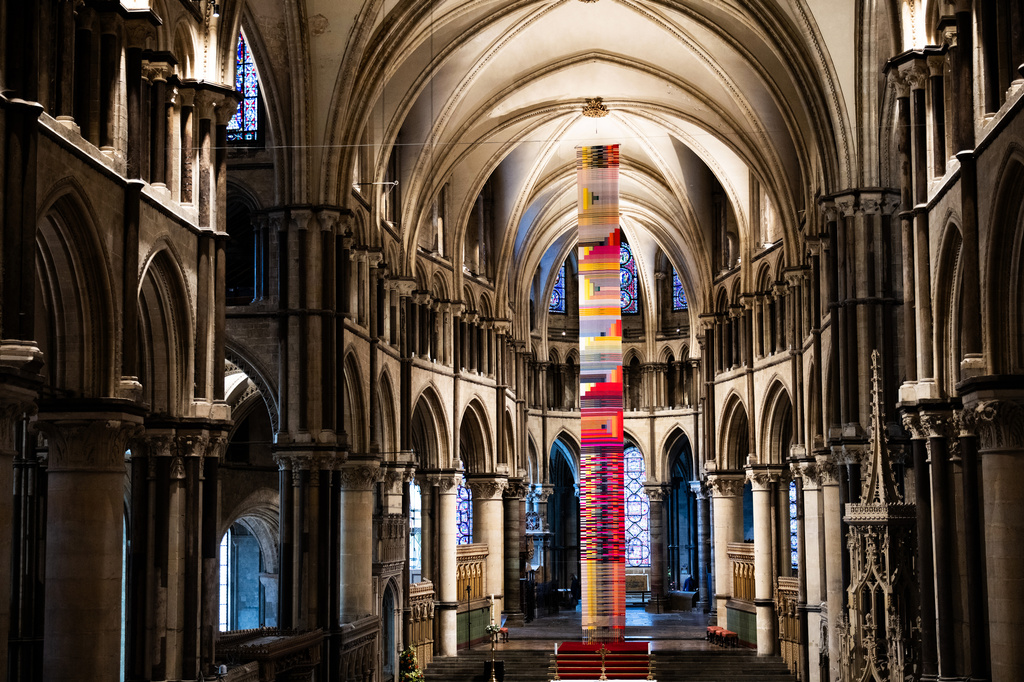
Margo Selby and Helen Caddick, moon landing Canterbury Cathedral Image credit – Canterbury Cathedral + Jon Barlow
Margo Selby talks about her collaboration with composer Helen Caddick to produce a weaving for Canterbury Cathedral in honour of pioneer women computer circuit makers.
“moon landing” is an installation held at Canterbury Cathedral in Kent to honour the Navajo women who wove the integrated computer circuits and memory cores that enabled the 1969 moon landing. The work is a collaboration between weaver Margo Selby and composer Helen Caddick. It comprised a 16-metre hand-woven textile suspended from the ceiling near the Cathedral’s Trinity Chapel, created in response to the moon landing score, an original musical piece scored for strings. The stripes of the weaving reflect the rhythm of the music. The abstract blocks of hand-woven thread that make up the composition move in a stepping motion, reflecting the way musical notes shift between the staves on a sheet of music.
- Margo Selby moon landing development – image credit Margo Selby Studio
- Margo Selby moon landing weaving – image credit Margo Selby Studio
- Margo Selby moon landing – image credit Margo Selby Studio
- Margo Selby moon landing – image credit Margo Selby Studio
- Margo Selby moon landing Canterbury Cathedral Image credit – Canterbury Cathedral + Jon Barlow
We speak to Margo about the story behind “moon landing”.
✿ How did your interest in music as an inspiration for your textiles start?
I love the relationship between music and textiles. The language used for music can often be applied to textiles: rhythm, pattern, composition, tone, etc.
I love to listen to music while I weave and use the rhythm and pattern found within the music as direction for rhythm and pattern in my colour and stripe combinations.
✿ What method do you use for relating your work to music?
I work instinctively and freely when responding to music. I like to let the music direct my instinctive colour and proportion choices. I also like to find patterns within the mathematical formulas that are found within music, applying the length of beats to proportion.
✿ How did the idea of “moon landing” come about?
Helen Caddick and myself had talked about collaboration. Her interest in responding to artists and my interest in responding to music led us to believe it was an ideal collaboration. We talked first about the crossovers between music and weaving, vocabulary, style and mathematics. The mathematical side of weaving led us to discussions about science and the use of weaving within science. Helen went on to research the story of the weavers involved in the moon landing, which inspired her “moon landing” music.
✿ Why was Canterbury Cathedral chosen as a venue?
It is a real privilege to exhibit at Canterbury Cathedral. Dean David approached us, as he has a passionate and refreshing approach to putting art and artists into the cathedral to help enrich the environment and engage with new audiences.
✿ Did Helen compose the music first?
I wanted the piece to be celebratory and uplifting with maximal colour, so I used the yellow as a starting point and took this on a journey through the spectrum.
We worked alongside each other, creating the music and the textile simultaneously. The warp was designed before the music was written and came from discussions about synesthesia. Yellow was the starting point, as this represented the string instruments which Helen sees in yellow and planned to compose the piece for. I wanted the piece to be celebratory and uplifting with maximal colour, so I used the yellow as a starting point and took this on a journey through the spectrum. As Helen created the music, she fed me snippets that gave me the starting point of the design. The actual setting up of the loom took two months, by which time, the body of the music was written, so I was able to weave in response to her music.
✿ How did you create the textile?
It was woven on a 20-shaft computer dobby loom by me and five assistants. It took four months working from 7 am to 7 pm. We worked in three-hour shifts to complete the work.
✿ What is the Lampas weave structure, and why do you use it?
The lampas weave structure was traditionally used in brocade fabrics. It is a tied weave, which means the wefts are tied to the surface with a fine, almost invisible thread. The reason I love this structure is that it allows our colour to be seen in both the warp and weft, and allows me to play with graphic colour blocking.
About Margo Selby
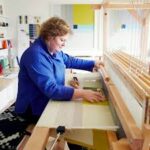 Margo Selby is a British textile artist and designer known for her distinctive woven textiles that explore colour and geometric form. Her work sits at the intersection of art, craft, and design. Selby’s journey began with an early family interest in textiles, which she pursued through formal education at Chelsea College of Art and Design and the Royal College of Art. After graduating in 2001, she developed her signature style by combining hand-woven constructions with industrial machinery. Her practice, which she started in her bedroom in 2003, has since grown into a thriving studio in Whitstable, Kent, where she creates handwoven art pieces and also designs for industrial production in collaboration with various partners. Visit margoselby.com and follow @margoselbystudio.
Margo Selby is a British textile artist and designer known for her distinctive woven textiles that explore colour and geometric form. Her work sits at the intersection of art, craft, and design. Selby’s journey began with an early family interest in textiles, which she pursued through formal education at Chelsea College of Art and Design and the Royal College of Art. After graduating in 2001, she developed her signature style by combining hand-woven constructions with industrial machinery. Her practice, which she started in her bedroom in 2003, has since grown into a thriving studio in Whitstable, Kent, where she creates handwoven art pieces and also designs for industrial production in collaboration with various partners. Visit margoselby.com and follow @margoselbystudio.

